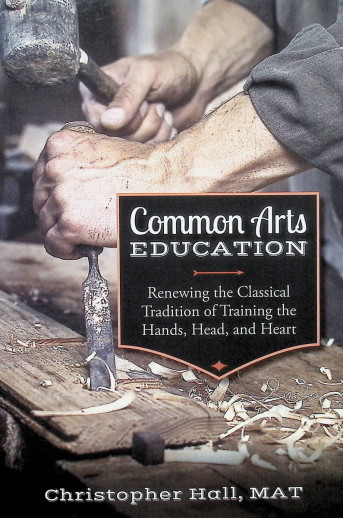We use cookies to make your experience better. To comply with the new e-Privacy directive, we need to ask for your consent to set the cookies. Learn more.
Common Arts Education
Skills such as woodworking, cooking, and leatherworking were once commonly taught to children, who grew up able to provide well for themselves and others. As modern generations rely more and more upon others to meet their basic needs, these once common arts are now becoming lost arts. In this book, Christopher Hall argues for a holistic approach to education, teaching the common arts skills alongside liberal arts, as an integral part of learning. Yet, he doesn’t just tell us why it’s vital to learn practical skills, he guides us in HOW to practically make it happen! As you discover the vital connection between the common arts and liberal arts, you’ll be encouraged to move forward with a plan that equips your kids in fields such as: Agriculture, architecture, tailoring, weaving, metalworking, woodworking, leatherworking, stonemasonry, navigation, medicine, cooking, hunting, and animal husbandry. A very informative and inspiring book! 280 pgs, pb. ~Nancie
Beginning with the story of the classroom experiences that led him to explore the common arts as a vector for the liberal and fine arts, the author outlines a vision for the resonance between the arts, supplies concrete steps that teachers can take to implement a common arts curriculum, and provides a series of experiences to try in any classroom, at any grade level. As you read, you will find the liberal arts applied, the fine arts situated, and the common arts revealed as a critical element of a classical education.
The practical application chapters of Common Arts Education offer background information; considerations such as the space and supplies needed for teaching each common art; “plug-and-play” lists of the basic skills that students should practice for each art; and resources for further reading. The author discusses 13 common arts, including:
- Agriculture
- Architecture
- Navigation
- Medicine
- Cooking
- Woodworking
- And much more!
Discover how the common arts provide the practical, artisanal elements of a holistic education and allow students to become not only fully functional in his or her knowledge, but fully charitable in the world!
| Product Format: | Paperback |
|---|---|
| Brand: | Classical Academic Press |
| Author: | Christopher Hall |
| Grade: | AD |
| ISBN: | 9781600514081 |
| Length in Inches: | 9 |
| Width in Inches: | 6 |
| Height in Inches: | 0.625 |
| Weight in Pounds: | 1.05 |

